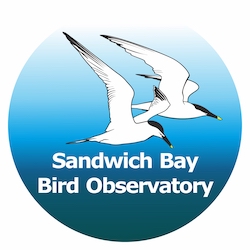GOB 48 – Rose-coloured Binoculars
(This article first appeared in the February 2014 edition of ‘Birdwatching’)
I’m waiting for the perfect winter raptor day to dawn bright blue, crisp and frosty – a clear day when I can see far across flat fields.
Hard winters bring too much snow between my goal and me. Mild ones, which have predominated for a decade, seem to stretch wet autumn through soaking winter into damp spring. I don’t drive in the snow as my maritime quarter has had no more than a dusting or two in my fifteen years here. Inland it can get a foot deeper with every extra mile! The cold can be kept out with winter wear and a flask of coffee… but the Scotch mists’ fine penetrating rain seems to pass through every layer, under the skin into your soul. Icy winds may turn your nose blue, but perpetual drizzle turns you blue inside.
The raptor haven raises a quandary. Winter visits there can produce Common and Rough-legged Buzzard, Hen and Marsh Harrier, Peregrine, Sparrowhawk, Merlin and Kestrel. The raptor roll call can also include a near full set of owls. Little Owls sit on a tumbledown cottage, Barn Owls drift along the hedges, Short-eared hunt below me in a deep ditch and Long-eared roost in a scrap of orchard. I dare say staying a while after dusk could add Tawny to the Tally. Once, a couple of years ago I added another three raptors seeing a wing-tagged Red Kite and two ‘foreigners’… a Harris Hawk dangling jesses and an unshackled mystery bird… perhaps an escapee Sharp-shinned Hawk, tearing apart a small duck.
The North Kent Marshes are one of our growing conservation successes half from luck, a part from effort and another chunk by serving entirely different interests.
Centuries of flooding stopped house building until the profit fuelled madness of the nineteen nineties. The recession, a dash of sense and the withdrawal of insurance have stopped that rush. A few farmers kept to tradition either knowing nothing better or from ‘noblesse oblige’. RSPB campaigns and common sense stopped airports and wholesale development. Latterly the RSPB has begun to buy strategic bits of drained land to restore and so join up existing reserves with their vision of geographical scale conservation. Good luck and good judgement have combined to give hope for a uniquely important place.
But here’s the rub. Slap bang in the middle of all this conservation is an area with no protection, yet that is the raptor Winter Palace. If you drive the stop start route glimpsing many other species along the way you will have to pull over every so often to let by a shiny 4×4. Behind the wheel of which will be someone in a flat cap, green wellies and with their checked shirt collar turned up outside of their green wool and suede waistcoat… and that is just the ladies on their way to pick up their banker spouses and broker buddies. When you sit atop the raptor watch-point you will look over shores of uncut maize, piles of protective hay bales and sapling copses. If you didn’t know how the land was used before it will soon become obvious when you hear the discharge of a Purdey or Perazzi. Out of sight I imagine a retriever clumping over the unploughed stubble to pick up the shattered corpse of a French partridge or the warm body of a purpose bred pheasant.
Shelter, feed, cover and copse are all there to help poults turn into shootable adults, not feed Corn Buntings or keep up the Short-tailed Vole numbers for Short-eared Breakfasts.
In the channel that makes this an island many a winter morning echoes to the sound of wildfowlers’ guns taking the pintails or widgeon that grace the flood.
So what do I do? Do I withdraw in disgust or gaze in awe through rose-tinted optics? I cannot lie because I’ve been seen there too often.
Hear the Podcast





